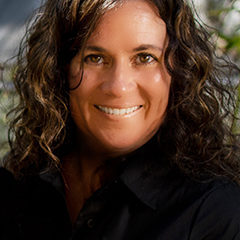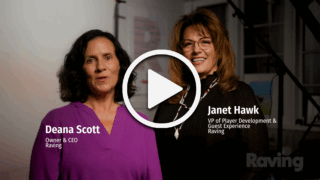
It’s good business and good for our soul!
Long before Wal-Mart greeters, my grandmother, at 75 years old, decided that she was going back to work after being out of the workforce for nearly twenty years. She insisted on applying at Kmart as a greeter (she called it K “mark” – yes, with a “k”). She had never worked a day of retail in her life and, more importantly, she never pronounced the name of the company correctly, even though we tried to remind her.
Apparently the interview went well, and she soon took her place at the store entrance. Frequently, I would stop by the store when she was working to say hello or take her to lunch. At the time, I was early in my career and intrigued that my grandmother was working in a fastpaced store, where most of the employees were barely out of high school. As the months rolled on, I discovered that not only was she enjoying the experience, but she was impacting the culture of the store. I witnessed customers hugging her, and showing patience with her pace. I even witnessed team members giving her high-fives as they entered the store.
Fast forward twenty-five years, and the multigenerational workforce is commonplace. In some cases, companies are blending five generations. (Yes, Generation Z is already reporting to work!). This means that we have 16-year-olds working alongside 76-year-olds. Throughout my career, I have worked with people from all walks of life, and who all have unique perspectives and wisdom.
Generation Z (20 & under) They are entrepreneurial and tech-savvy. They want to co-create and not be told what to do. They see what is wrong with the world and are already creating solutions to fix it. It’s still too early to understand their impact on the workforce, but I can’t wait to see how they will contribute.
Millennials (Age 20-35)This technology-savvy, multitasking generation will drive the way that organizations operate. They truly want to make the world a better place. A “top-down” management style will not work with this group. It is time to stop bashing the work habits of the Millennials and begin to embrace their perspective. If you don’t, you will have a tough time creating organizations that innovate for the market of today and tomorrow.
Generation X (Age 36-56) According to some studies, this group makes up 60 percent of the workforce. These workers are educated, loyal, creative, and still interested in learning. In fact, according to a study done by Ernst & Young, Gen Xers were cited as the highest “revenue generators” among all the generations. They are driven and loyal.
Baby Boomers (Age 57-70) This group is waiting to offer assistance and advice. This generation has “been there and done that.” They may be returning to work, after leaving the workforce, as a way to contribute and remain relevant. (Check out the movie, The Intern, with Anne Hathaway and Robert De Niro, for a glimpse of what I am talking about. I’m not gonna lie, it’s a “chick flick,” but even my husband gives it a thumbs up).
The Silent Generation (72-93) This was my grandmother’s generation. They grew up during the Great Depression and WWII. As far as I am concerned, this is a group of individuals who deserve opportunity and our appreciation. They consider working a privilege, believing that you earn your way to the top through hard work.
In fact, one of my best hosts was a part of this generation. He started with us in his mid-70s, with no experience, and quickly earned the respect and loyalty of the guests and his co-workers. So much so, that an annual service award was named after him and is still given in his honor years after his retirement.
Is your casino set up for today’s workforce?
Employees of today and tomorrow are not going to settle for organizations whose hierarchy and rules come from the 1950s. They expect a collaborative approach to decision-making, and when done right, this can make a multigenerational workforce even more powerful. Imagine how authentic and impactful decisions about our guests and corporate culture could be if we harnessed this diverse perspective.
Here are a few ideas to consider:
Create reverse generation mentor programs – Let the younger employees create training based on their skill sets. Check out the Fortune article, “How Millennials in the Workplace Are Turning Peer Mentoring on Its Head.”
Incorporate a 360° strategic planning philosophy – Ensure that your business objectives include the perspective of the entire organization, not just the executives at the top. This will incorporate the perspective of all levels of experience, age, race and gender, creating a very powerful document that will be embraced by the entire organization.
Recognize that employees communicate differently based on their generation – You may want to use multiple communication channels to ensure that you are speaking to the whole team (text message, email, flyers, in-person, etc.). How about asking for volunteers to teach new technology methods in the break room? This may give your Millennials & Gen Zers a chance to assume a quasi-leadership role, and be an opportunity to improve communication throughout the organization.
Create flexible scheduling – Welcome students, parents with daycare issues, and those returning to the workforce who may have limited hours that they can work. This will make scheduling a bit more difficult, but you will attract a diverse group of individuals who will appreciate your willingness to accommodate their needs, creating more loyalty.
Include a “Tolerance & Diversity Team” – They’ll weigh in on new policies and topics to ensure that all perspectives are considered. In Native organizations, this could create opportunities for conversations about the importance of elders in Native culture, etc.
In the end, embracing diversity based on age, gender and race in the workforce is good for business. Creating this culture will create happier employees, which equates to a richer guest experience. As we know, happier guests equal greater profits. Aside from profits, I think this quote from American inventor and scientist, George Washington Carver, sums it up: “How far you go in life depends on your being tender with the young, compassionate with the aged, sympathetic with the striving, and tolerant of the weak and strong. Because someday in your life you will have been all of these.”
BTW – Until the day she died, my grandmother still called Kmart – K “mark” (the store management never did correct her pronunciation), which today still makes me smile.







